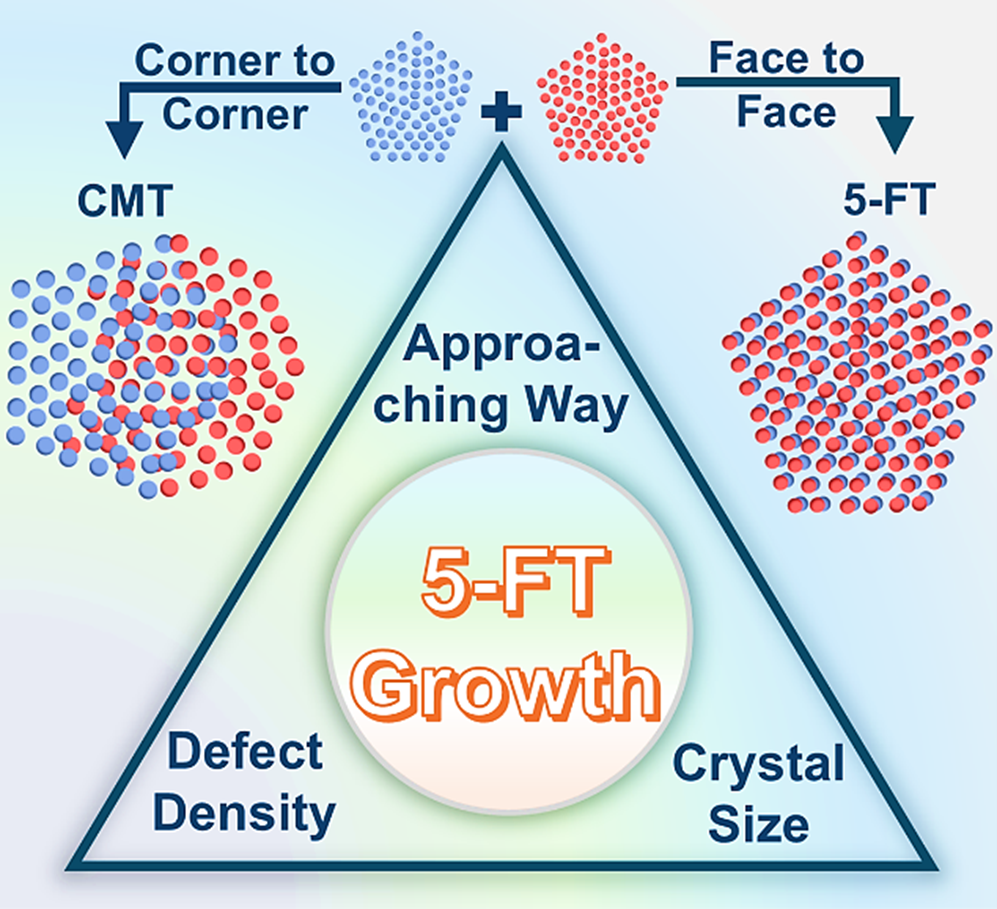Atomic-Scale Dynamics of Five-Fold Twin Mediated Coalescence: Pathway-Dependent and Defect-Governed Nonclassical Growth Mechanisms
Editor: | Jul 24,2025
Nucleation and growth are the two distinctive steps in crystallization. The pervasiveness and importance of crystallization lie in that it occurs in many natural processes, and the crystal growth process plays a critical role in determining the morphology, size and purity of the crystalline products. Therefore, uncovering the growth dynamic process at the atomic scale is an important subject with a practical interest in science and defect engineering.
To address this challenge, a research team from the Xinjiang Technical Institute of Physics and Chemistry of the Chinese Academy of Sciences (CAS) uncovered the size, defect density and approach pathways influenced crystal coalescence growth at atomic-scale, in cooperation with scientsts from Lawrence Livermore National Laboratory and International Iberian Nanotechnology Laboratory. The results published in Journal of the American Chemica Society with the title “Atomic-Scale Dynamics of Five-Fold Twin Mediated Coalescence: Pathway-Dependent and Defect-Governed Nonclassical Growth Mechanisms”.
In this work, the post-nucleation growth via coalescence of five-fold twinned Au NCs is investigated by atomic-scale in-situ dynamic observations in an aberration-corrected TEM (AC-TEM, image corrected TEM). The results demonstrate that five-fold twinned Au NCs can be grown by de-twinning involved coalescence growth pathway in two 5-FTs (~ 6-11 nm), or by atomic rearrangement and surface migration dominated coalescence growth route between a 5-FT and a NC. When the particle size after coalescence exceeds a critical size, a complex multi-twinned structure is favoured. Importantly, our results confirm that, in addition to the size factor (At the nanoscale, particle size plays an important role in determining the crystal coalescence pathways. When the smallest particle size is below approximately 10 nm, the coalescence of NCs proceeds via the particle rearrangement-dominated coalescence ment-dominated coalescence pathway.), the initial planar defect density and the approach pathways of the NCs critically influence the coalescence growth rate as well as the resulting final crystal configuration. Moreover, the atomic scale dynamic information on the 5-FT involved coalescence processes including intermediate state structures, column-by-column GB migration mechanism, twining and de-twinning processes are also fully investigated in this study.

Fig. 1 The size, defect density and approach pathways influenced crystal coalescence growth
附件下载:
 (86) 991-3838931
(86) 991-3838931 lhskj@ms.xjb.ac.cn
lhskj@ms.xjb.ac.cn (86)991-3838957
(86)991-3838957 40-1 Beijing Road
Urumqi, XinjiangChina
40-1 Beijing Road
Urumqi, XinjiangChina